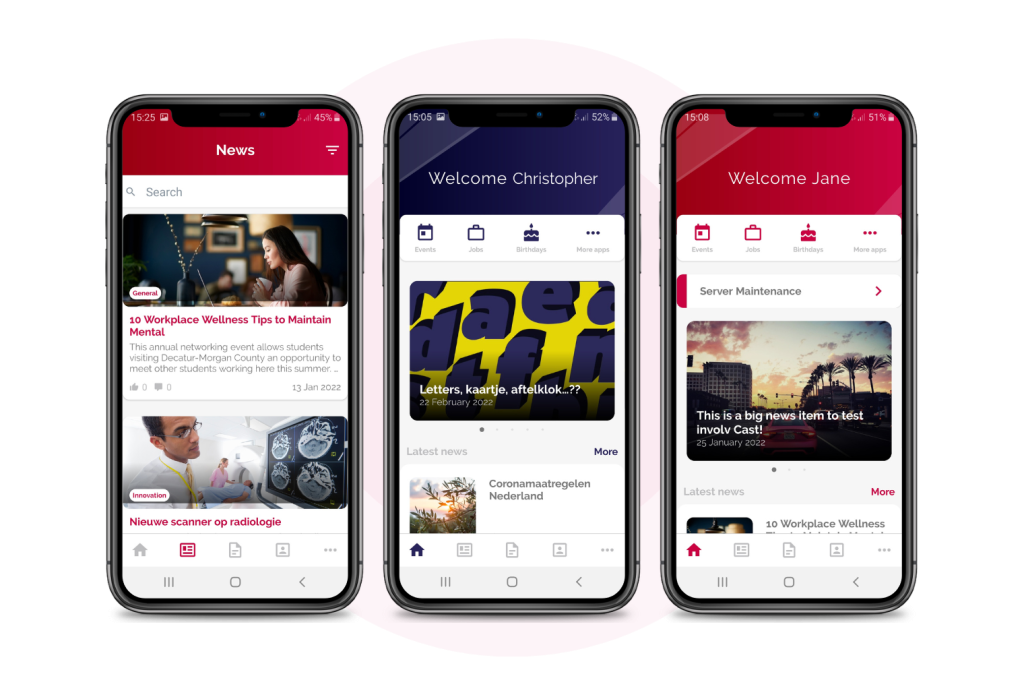People are at the heart of all businesses. So, making the way they interact with each other as smooth and seamless as possible is key to creating a successful workplace community.
It is often the role of internal comms to foster these interactions, cultivating workplace communities to help meet the common goals of the company.
The benefits of a strong workplace community are numerous, from increased employee engagement and retention to better staff well-being and a sense of belonging.
And the benefits aren’t confined just to employees. According to research by Gallup, companies with high employee engagement are 21 per cent more profitable.

Building a strong workplace community can be achieved in many ways. Yet in this world of hybrid, distributed and asynchronous working, an intranet is a key part of an internal comms toolkit.
A modern intranet can help internal comms facilitate social interactions and shared experiences amongst colleagues.
Here are 10 ways you can use your intranet to do just that:
1. Encourage collaboration and teamwork
Integrate and incorporate Yammer, soon to be Viva Engage an evolution of the Yammer Communities app in Microsoft Teams, as part of your collaboration strategy.
Give it a look that feels on brand and foster an environment where employees feel comfortable working together and supporting each other.
2. Recognise and reward employees
Turn on comments on news articles and publish stories that show your appreciation for your employees’ hard work and contributions to the company whilst allowing team members to share their stories too.
3. Allow two-way communication
Move away from a post-box news function and introduce more listening and two-way comms, and actively empower colleagues to speak up so management can listen and engage with the grassroots staff.
Integrate your social media feeds so that employees can stay up to date with your company’s social messages. This means they can even like or share a post on social without leaving your intranet.
4. Enable colleagues to engage no matter where they’re located
Introducing a mobile app helps everyone to feel more connected. Those working away from the office can access company news, as well as publish news and comment on stories themselves no matter where they are.

5. Share employee stories
The more staff see stories shared by their colleagues, the more likely they’ll share stories too. Train your department teams how to publish their own stories using your intranet’s pre-made templates. Create permissions and approval workflows to let your employees’ voices be heard.
6. Set up employee advocacy groups
From feedback groups to “meet the leader” sessions, leader lunches to graduate trainee communities, there’s a range of ways to turn these groups into thriving communities.
Use your intranet’s ‘Events’ component to keep track of all these (internal) events. Events can even have their own dedicated page, where employees can register and organisers can see who’s interested in attending or not.
7. Create a home-base
Using your intranet’s customisable homepage to create a sense of community. Make it accessible to all members and a place where employees can join in, interact and kick-start conversations with each other.
8. Empower influencers
Introducing departmental SPOCs (Single Point of Contact) is an excellent way to build and maintain internal communities. These special internal influencers can be especially helpful with cascading information on a more personal level.
Give them special permissions to publish content and create push notifications, mandatory reads to empower them.
They are also an important source of information, to know what is going on in the workplace. IC can then better respond to what truly lives in the organisation.
9. Announce new starters
The moment a new employee signs on the dotted line is the perfect time to share their imminent arrival with colleagues. Use your intranet to highlight who they are, what they’ll be doing and when they’ll be starting.
Don’t stop there: think about doing interviews with new hires for a more in depth understanding of their goals, background and aspirations. You can do the same for colleagues who are retiring; what did their job mean to them, what were their greatest achievements? This provides great, relevant content and creates a strong feeling of belonging.
10. Listen and learn
The more data you can collect, the more it will inform and improve your internal communications.
Use your intranet’s analytics feature to monitor how effective your internal comms campaigns are. Monitor data such as top page visits, top authors, top contributors, top creators and top performing content.
Building a strong workplace community on your intranet is just one of the many ways you can make your life as an internal comms professional easier.
Download our ebook for more tip on overcoming the key challenges of internal communications.
Or why not book a demo and speak with one of our friendly intranet experts?

Free Ebook
Overcoming the Challenges of IC:
Lessons from practitioners
Lessons from practitioners


